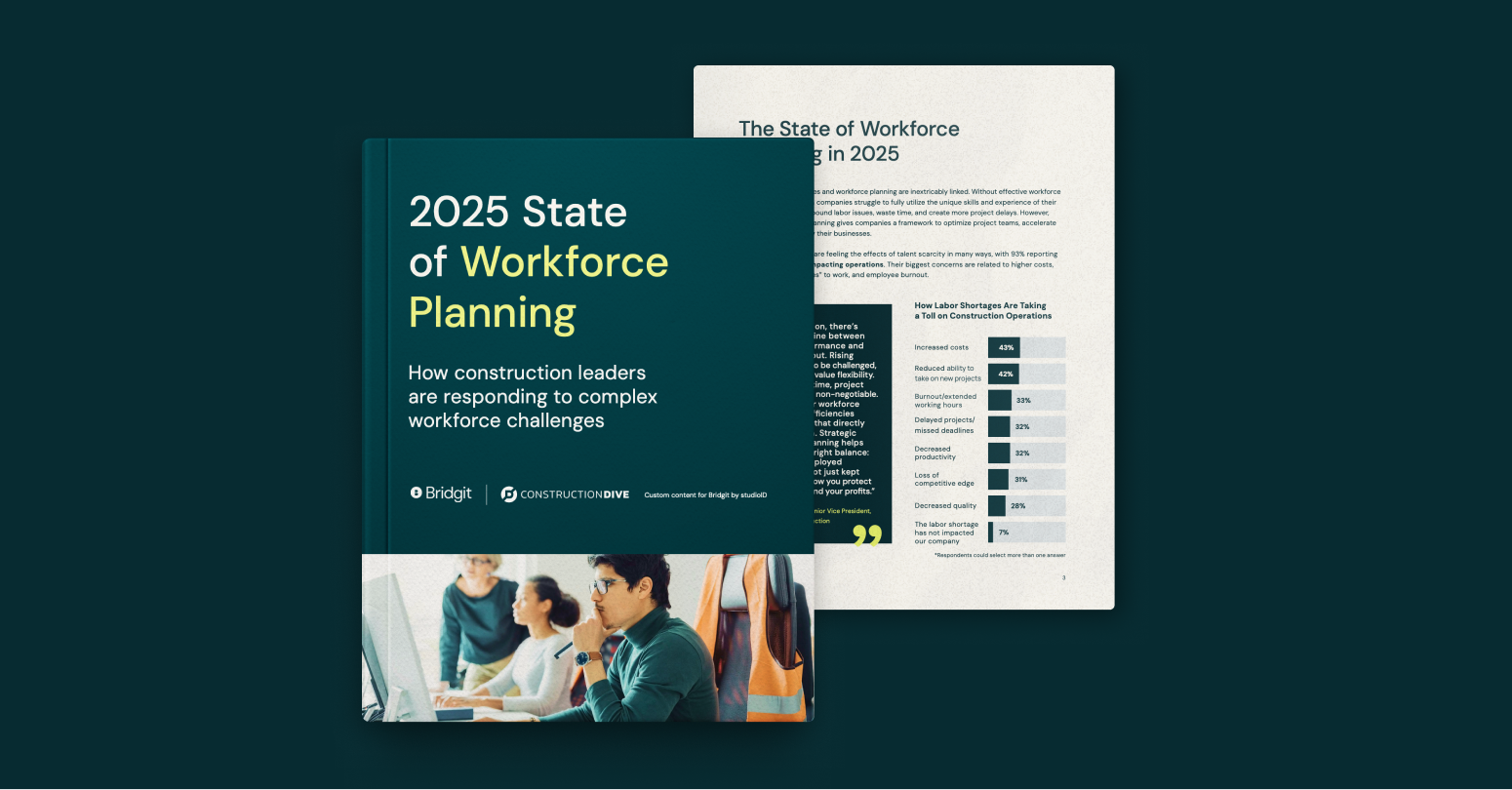Table of Contents
Workforce optimization isn’t a new problem in construction. Despite ongoing efforts to make the most of their teams, contractors face persistent labor shortages and other workforce constraints that stand in the way.
In response to labor supply challenges, many contractors have turned their focus to increasing the performance of their existing teams. Too often, however, hidden inefficiencies in the workforce planning process prevent them from making the most of their team’s talent and resources.
Bridgit and Construction Dive’s studioID surveyed construction leaders across operations, project management, human resources, and business development to understand their workforce planning approaches and the challenges standing in their way. This post will break down some of the key findings, and what they mean for your company’s workforce planning efforts.
Workforce planning becomes strategic
Construction leaders recognize the value of individual expertise and how well a team can come together to use combined knowledge, skills, and experience to anticipate risks, solve problems, and execute flawlessly.
In fact, 100% of survey respondents agree that a project team’s collective experience is significant in creating positive project outcomes.
To build the highest-performing teams possible, contractors must be able to track data across several functions, including availability, build-type experience, market-type experience, and more. Accounting for these data points is essential for the strategic assembly of crews based on relevant capabilities, skills, and project demands.
To enable this, modern workforce planning has become more proactive. Planning needs to incorporate critical variables like team composition based on collective experience to drive heightened project outcomes. For example, employees who have worked with an owner previously know how to navigate that client’s unique requirements without having to relearn them, which benefits all stakeholders.
Workforce planning software has a critical role to play
Most contractors also agree that the right workforce planning software can effectively address their workforce productivity issues. Despite this, many still use Microsoft Excel (71%) or a whiteboard/pen and paper (43%) to manage aspects of workforce planning, but not for long.
Survey respondents say software investments are a top priority in the next year:
- 75% of leaders plan to invest at least $100,000 in workforce planning technology in the next 12 months.
- 99% of leaders expect to incorporate AI into workforce planning in the next three to nine months.
As they seek out the right workforce planning tools, construction leaders know what they want. They plan to prioritize capabilities in three areas:
1. Automation and AI features (45%)
A workforce planning tool with built-in automation and AI features is at the top of leaders’ wish lists. These capabilities might help anticipate labor needs, identify best-fit team members, and assess the impact of different workforce strategies.
2. Forecasting and analytics (43%)
Right behind automation is the demand for forecasting and analytics. With accurate data to inform forecasting, companies can anticipate challenges and make proactive decisions about the supply and demand of labor and project risks.
3. Integration capabilities (43%)
Integrations are tied to forecasting and analytics. Construction teams want to enable data flow and interoperability between their workforce planning tool and other platforms, from CRM to payroll systems.
Elevating your workforce strategy for the future
This post provided a brief overview of the trends and data driving the future of construction. To learn more about the state of workforce planning in 2025, how traditional workforce planning ignores valuable data for building high-performing teams, and technology’s role in building a future-proof workforce planning strategy, download the full report now.


